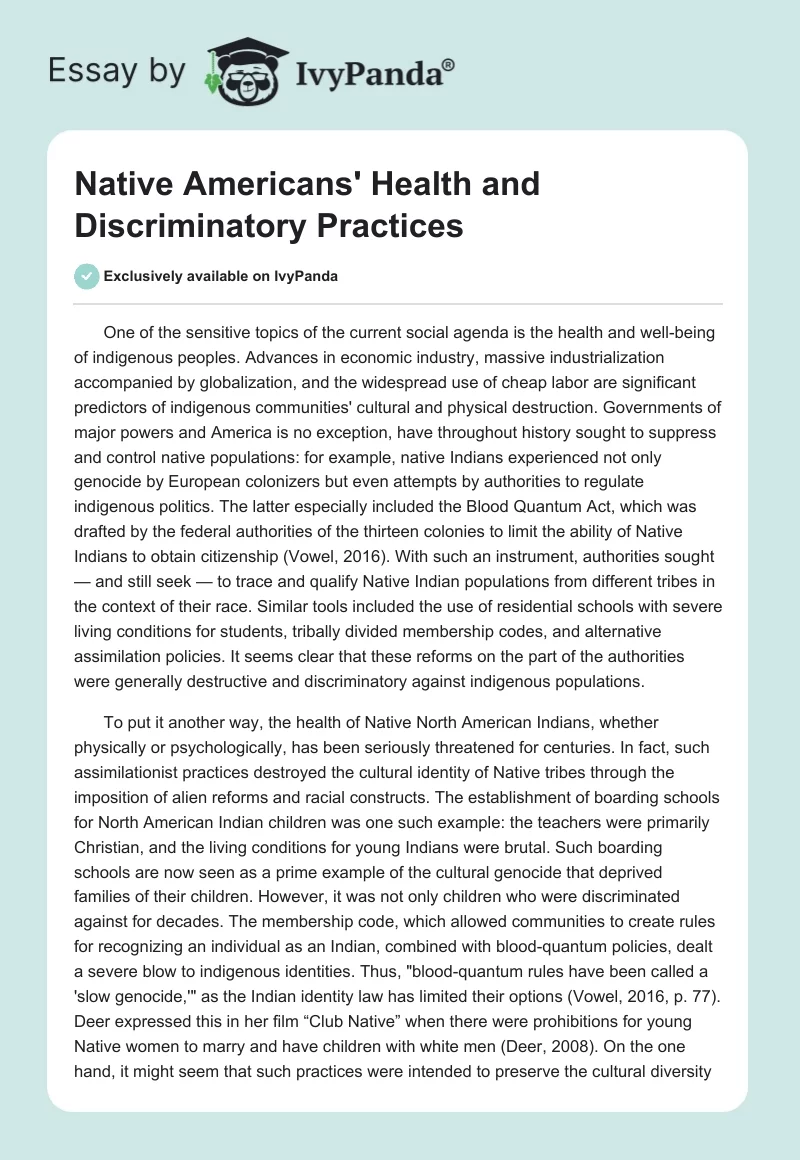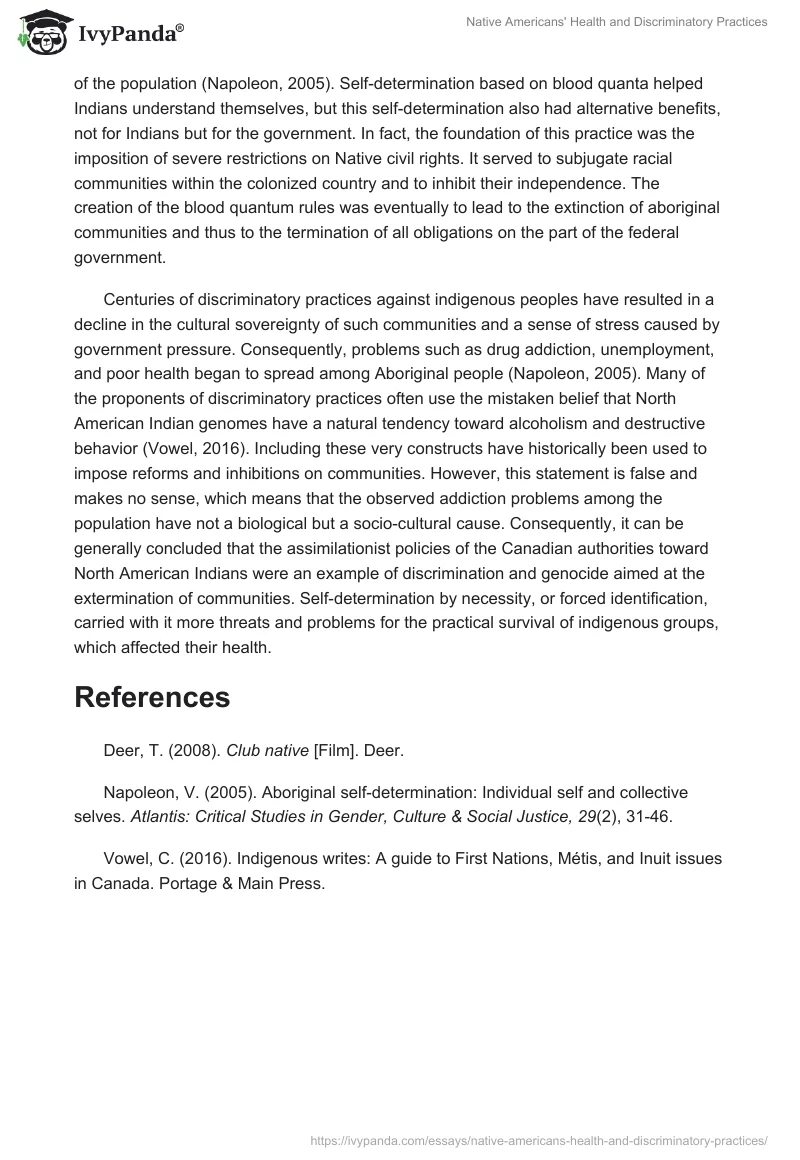One of the sensitive topics of the current social agenda is the health and well-being of indigenous peoples. Advances in economic industry, massive industrialization accompanied by globalization, and the widespread use of cheap labor are significant predictors of indigenous communities’ cultural and physical destruction. Governments of major powers and America is no exception, have throughout history sought to suppress and control native populations: for example, native Indians experienced not only genocide by European colonizers but even attempts by authorities to regulate indigenous politics. The latter especially included the Blood Quantum Act, which was drafted by the federal authorities of the thirteen colonies to limit the ability of Native Indians to obtain citizenship (Vowel, 2016). With such an instrument, authorities sought — and still seek — to trace and qualify Native Indian populations from different tribes in the context of their race. Similar tools included the use of residential schools with severe living conditions for students, tribally divided membership codes, and alternative assimilation policies. It seems clear that these reforms on the part of the authorities were generally destructive and discriminatory against indigenous populations.
To put it another way, the health of Native North American Indians, whether physically or psychologically, has been seriously threatened for centuries. In fact, such assimilationist practices destroyed the cultural identity of Native tribes through the imposition of alien reforms and racial constructs. The establishment of boarding schools for North American Indian children was one such example: the teachers were primarily Christian, and the living conditions for young Indians were brutal. Such boarding schools are now seen as a prime example of the cultural genocide that deprived families of their children. However, it was not only children who were discriminated against for decades. The membership code, which allowed communities to create rules for recognizing an individual as an Indian, combined with blood-quantum policies, dealt a severe blow to indigenous identities. Thus, “blood-quantum rules have been called a ‘slow genocide,’” as the Indian identity law has limited their options (Vowel, 2016, p. 77). Deer expressed this in her film “Club Native” when there were prohibitions for young Native women to marry and have children with white men (Deer, 2008). On the one hand, it might seem that such practices were intended to preserve the cultural diversity of the population (Napoleon, 2005). Self-determination based on blood quanta helped Indians understand themselves, but this self-determination also had alternative benefits, not for Indians but for the government. In fact, the foundation of this practice was the imposition of severe restrictions on Native civil rights. It served to subjugate racial communities within the colonized country and to inhibit their independence. The creation of the blood quantum rules was eventually to lead to the extinction of aboriginal communities and thus to the termination of all obligations on the part of the federal government.
Centuries of discriminatory practices against indigenous peoples have resulted in a decline in the cultural sovereignty of such communities and a sense of stress caused by government pressure. Consequently, problems such as drug addiction, unemployment, and poor health began to spread among Aboriginal people (Napoleon, 2005). Many of the proponents of discriminatory practices often use the mistaken belief that North American Indian genomes have a natural tendency toward alcoholism and destructive behavior (Vowel, 2016). Including these very constructs have historically been used to impose reforms and inhibitions on communities. However, this statement is false and makes no sense, which means that the observed addiction problems among the population have not a biological but a socio-cultural cause. Consequently, it can be generally concluded that the assimilationist policies of the Canadian authorities toward North American Indians were an example of discrimination and genocide aimed at the extermination of communities. Self-determination by necessity, or forced identification, carried with it more threats and problems for the practical survival of indigenous groups, which affected their health.
References
Deer, T. (2008). Club native [Film]. Deer.
Napoleon, V. (2005). Aboriginal self-determination: Individual self and collective selves. Atlantis: Critical Studies in Gender, Culture & Social Justice, 29(2), 31-46.
Vowel, C. (2016). Indigenous writes: A guide to First Nations, Métis, and Inuit issues in Canada. Portage & Main Press.


